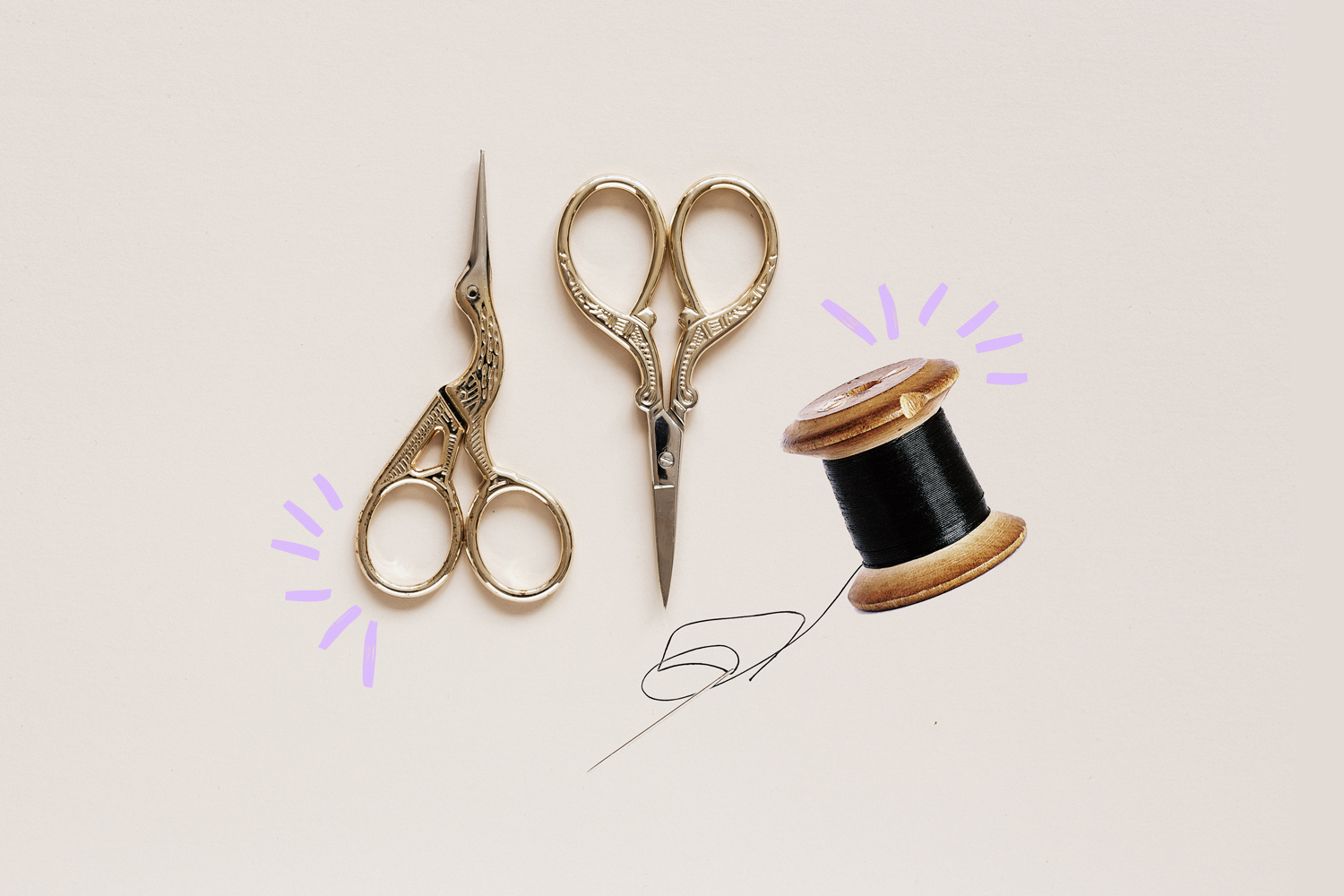Fashion is changing, but what can we all do to minimise our impact on the planet? This is why mending is at the top of our list.
Thanks to people’s awakening to the dramatic impact of the fashion industry on climate change, buying new clothes is now almost seen as a personal attack on the planet. Clothes are now second-hand, vintage and even rented, but keeping your own clothes ‘alive’ for as long as you possibly can is the best thing you could do to help the fashion revolution.
A report by Ellen MacArthur Foundation points out that the total greenhouse gas emissions from textiles production are set at 1.2 billion tonnes annually – more than those of all international flights and maritime shipping combined. Mending a shirt to be able to use it for a few additional months might seem a big hassle that will have little impact, but prolonging the life of a garment for nine months can reduce its footprint up to 30%.
To really understand the impact and the importance of mending your clothes, it’s useful to point out that less than 1% of the material used to produce garments is recycled into new clothing and 20% of industrial water pollution globally is attributable to the dyeing and treatment of textiles. We tend to think that a piece of clothing is just a piece of clothing, but the fashion industry as it is today is a huge enemy of our planet and our own well-being.
If once garments were something to cherish, thanks to the rise of fast fashion (Zara offers 24 new clothing collections each year; H&M offers 12 to 16 and refreshes them weekly), a quicker turnaround of new styles and a lower price tag, clothes are now seen as disposable and unimportant. In the last 15 years, clothing production has approximately doubled while clothing utilisation – the average number of times a garment is worn before it ceases to be used – has decreased by 36%.
It’s safe to say that, at this rate, it’s going to be hard to reverse the industry’s effect on climate change.
So, is mending the future of fashion?
Yes, mending using services like The Restory or SOJO, renting on apps like ByRotation and repurposing your garments are all actions that we need to embrace if we want to do our part, but we are not suggesting you stop buying completely.
There are an incredible amount of sustainable and ethical brands that are making waves and really changing the face (and the future) of the industry. Supporting them means helping the cause, but beware of greenwashing. Sustainability has become an overused marketing ploy for big brands that just want to jump on the bandwagon to make a quick profit. Having a ‘conscious collection’ doesn’t make a brand sustainable, or ethical.
Consuming less should definitely be a part of our objectives – in all aspects of life, not only fashion – but I don’t think that demonising a whole industry is the right way to go.
Yes, we should reuse, recycle, buy second hand and mend as much as we possibly can, but it’s important to remember that fashion is also a form of art and a way to keep different savoir-faire and traditions alive. So next time you need to buy something new, look for brands that are doing the work and paying it forward. There are lots of platforms like Immaculate Vegan, So Just Shop or Ishkar, that operate in a sustainable and ethical way – helping communities, preserving local traditions and promoting conscious consumerism – where it’s possible to find hundreds of amazing eco-friendly brands.
As consumers, our most powerful tool is our wallet so let’s put our money where our mouths are.


